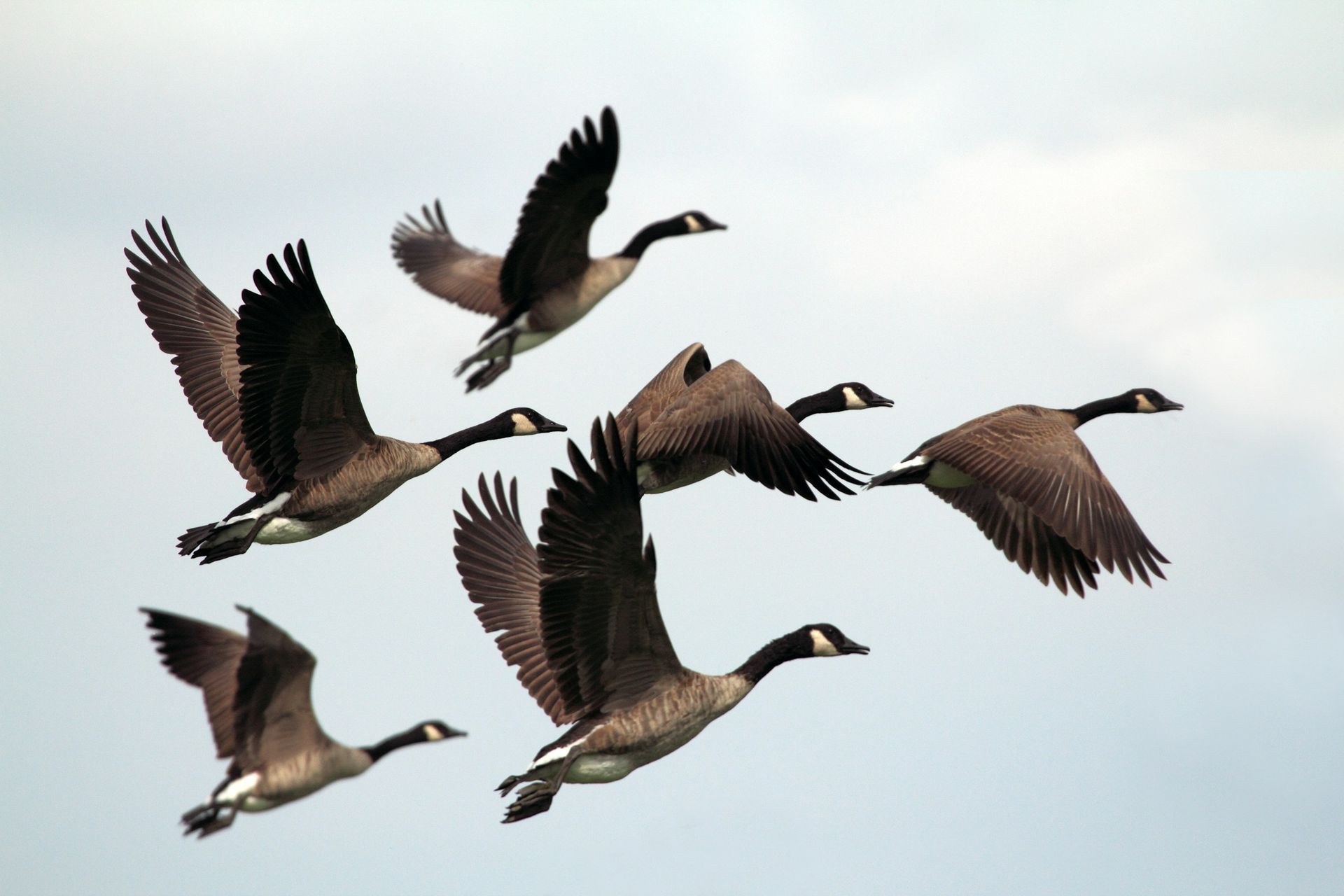Geese are large waterfowl known for their strong migratory instincts, social behaviors, and loud honking calls. They are found across the globe, inhabiting lakes, rivers, wetlands, and grasslands. Geese play an essential role in ecosystems by grazing on vegetation and dispersing seeds, contributing to wetland health.
Most geese range between 20-45 inches in length and can weigh from 5 to 20 pounds, depending on the species. They have long necks, broad bodies, and strong wings, which make them excellent fliers capable of long-distance migrations. Their plumage typically varies between shades of gray, white, and black. Species like the Canada Goose and Snow Goose are common across North America.
Geese are primarily herbivorous, feeding on grasses, grains, and aquatic plants, though they occasionally consume small insects and invertebrates. They are monogamous and form strong pair bonds that can last a lifetime. During the breeding season, females build nests on the ground near water, laying 4-7 eggs. Both parents guard the nest and fiercely protect their young from predators.
Natural predators of geese include foxes, raccoons, and large birds of prey. Human-related threats such as habitat destruction, hunting, and pollution also impact their populations. Despite these challenges, many species have adapted to urban environments and are now common in parks and golf courses.

For your safety and the well-being of wildlife, please observe animals from a distance and avoid touching or disturbing them. If you encounter an animal that appears injured or in distress, contact a licensed wildlife rescue organization for guidance before intervening.
Found An Animal? Not sure how to help a wild animal in need? Learn when to step in, who to call, and how to help safely.
Did You Know?
- Geese have been observed mourning lost mates or goslings, showing signs of grief similar to other intelligent animals.
- Some species of geese use their wings not just for flight but as weapons, striking predators or rivals with powerful blows.
- Goslings imprint on the first moving object they see after hatching, which can sometimes lead them to follow animals other than their parents.
- Geese can recognize individual human faces and remember whether someone is a threat or a friend.
- Snow Geese change their diet seasonally, switching from aquatic plants in summer to grains in agricultural fields during migration.
- In some cultures, geese have been used as "guard animals" due to their loud honking and aggressive defense of territory.
- Geese have a third eyelid, called a nictitating membrane, which helps protect their eyes while swimming and flying.
- Their webbed feet don’t get cold, thanks to a specialized heat exchange system that minimizes heat loss in icy water.
- Canada Geese can travel up to 1,500 miles in a single day during migration.
- Both parents are highly protective of their goslings, often hissing and charging at perceived threats.
- Geese are known to exhibit playful behavior, including rolling on the ground, splashing in water, and even playing "chase" with one another.
Problems Faced In The Wild
- Habitat Loss: Wetland drainage and urban development reduce nesting and feeding areas.
- Pollution: Contaminants in water sources can harm geese and reduce food availability.
- Climate Change: Altered weather patterns affect migration and breeding success.
- Human Disturbance: Recreational activities can disrupt nesting geese and cause stress.
- Hunting and Poaching: Some species are targeted for sport or illegal trade.
- Entanglement: Fishing lines and other debris pose serious risks to geese.
Tips For Cohabitation
- Preserve Wetlands: Support conservation efforts that protect natural water sources.
- Avoid Feeding Geese: Human food can harm their health and disrupt natural behaviors.
- Properly Dispose of Fishing Gear: Prevent entanglement and injury by keeping waterways clean.
- Provide Native Plants: Planting native vegetation around ponds and lakes creates a natural buffer.
- Keep a Safe Distance: Avoid disturbing geese during nesting season.
- Educate Others: Share information about the ecological importance of geese and their role in maintaining healthy wetland ecosystems.



